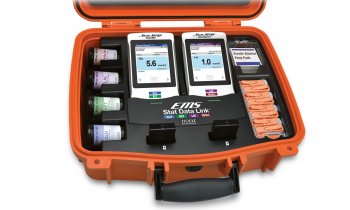Cross-enterprise electronic healthcare records (eEPA) in Europe
The creation of standardised cross-enterprise healthcare records in Germany will be increasingly promoted in numerous national initiatives and projects spanning several manufacturers, e.g. by the eFA initiative for the electronic case file headed by the Fraunhofer Institut ISST.
By Jens-Uwe Thieme, Business Line Manager HIS & ERP Systems, iSoft Health GmbH

ERP systems.
However, how can these projects be assessed in an international comparison? What experiences and successes are available in neighbouring European countries? Looking across the border is worthwhile, especially regarding cost-benefit reasons and also an ever closer harmonisation across Europe in the health sector.
Cross-enterprise records usually means electronic case files focused on the patient and/or the treatment. Depending on their purpose, these files have a permanent or time-limited validity and are always subject to patient approval, which, of course, they can partially or completely withdraw at any time. Users of these files are predominantly physicians involved in the treatment – unlike the medical files maintained by a patient.
In the future, case files will be able to include any type of medical information. Their purpose and challenge are not only the accumulation of information, but also the structured storage of information and the possibility of its use in different recipient systems – in other words, neutrality with regard to manufacturers. For this reason the future consistent support of international standards is a necessary condition. An example worth mentioning here is the IHE XDS standard (Integrating the Healthcare Enterprise Cross-Enterprise Document Sharing), which facilitates the registration and distribution of, and access to, electronic healthcare records across several health sector enterprises. At the same time it provides an interoperable approach based on standards for the joint utilisation of documents between enterprises in the healthcare sector, from the general practitioner (GP) via the clinic to aftercare. The XDS standard has already been successfully used in a multitude of national initiatives, e.g. in Canada, France and Austria.
When comparing the different approaches and projects in European countries, the NPfIT (National Health Program for IT) at the UK’s NHS (National Health System) is certainly an exception due to its dimensions and implementation status. The target set by the government is the centralisation of information in healthcare record systems for 30,000 general practitioners and 300 hospitals and health centres. However, in countries such as Holland and Austria interesting projects have also begun and can already show first results in some cases. In Austria, since 2006 the project ELGA (electronic healthcare record) represents a very promising initiative, although not too publicly well known. However, the preproduction costs, with an estimated ?30 million during the design stage, are quite considerable. Nonetheless, nationwide implementation is planned for 2009. On the other hand, in the Netherlands efforts are still relatively new. The recently started NICTIZ (Nationaal Instituut voor ICT in de Zorg) initiative, with the working title MMS (Multimedia Sharing), is still in the early planning stages and implementation phase.
Although national projects now exist in many European countries, given a Europe without borders, how can those national initiatives be integrated into a common European context? An example is the use of internationally active IT providers who consistently use international standards in their solutions. iSOFT, for example, is currently working on a cross-enterprise electronic healthcare record system as part of the Lorenzo Integrated Care Initiative, combining the requirements from Germany (eFA) and the Netherlands (MMS) into a single product. This will allow patients presenting for treatment in border areas, e.g. in the Aachen/Maastricht region, to make their clinically relevant data available to physicians in both states in future.
Help for harmonisation across Europe could also arrive from Brussels. With the European eHealth Action Plan (2004), the development of which currently involves 12 EU member states and about 30 industry partners. Its objective is the creation of an EU standard for interoperable healthcare records (EHRs) and a bundling of the requirements for records, as well as a political adjustment of the necessary legislation in the countries (EU guidelines). The above-mentioned stringent utilisation of international standards also makes integration of the nationally created record systems ever more probable.
29.10.2008











